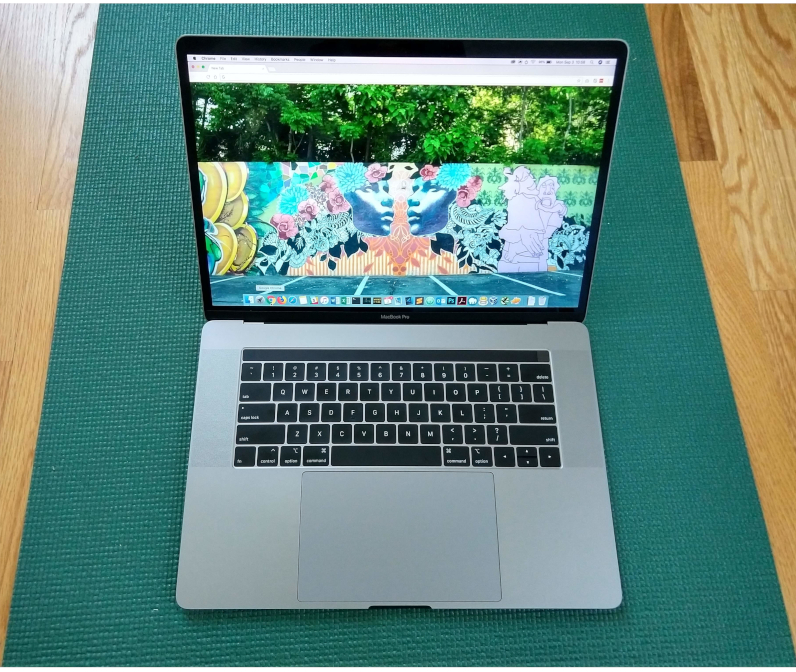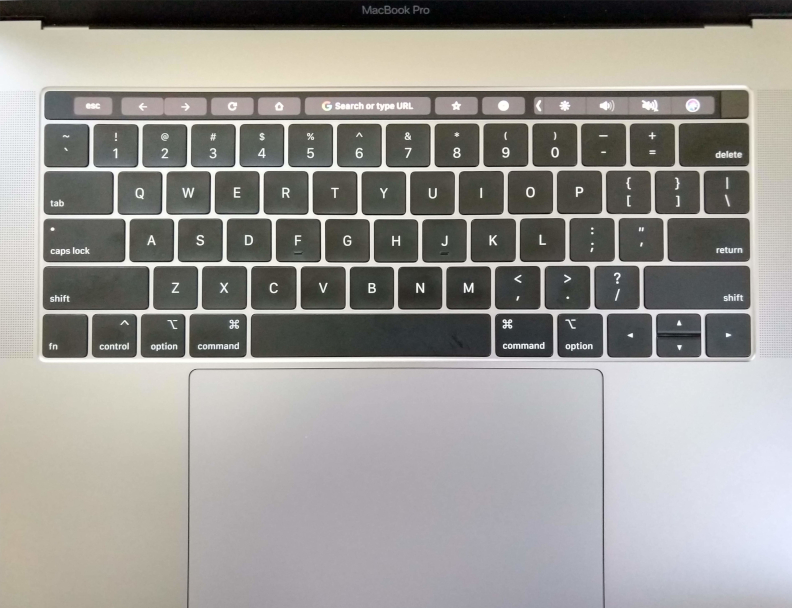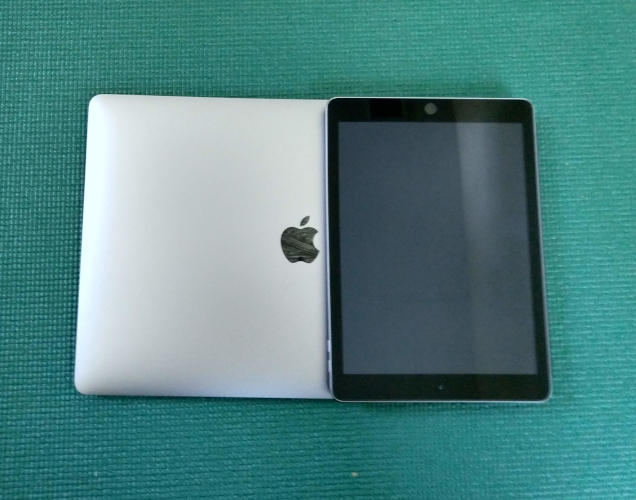
Apple has been tinkering with their MacBook as of late to usher them into the modern era. But even with all of the changes, Apple kept to a conservative design philosophy that shouldn’t shock most people, save for a very vocal minority.
I got the chance to use a 2018 MacBook Pro as a daily driver. It’s the 15.4 inch version with a 2880 by 1800 pixel display, an Intel UHD 630 GPU, a 2.9 GHz core i9 processor, and 16 gigs of RAM. It’s currently running High Sierra 10.13.6.
It weighs roughly four lbs., and feels comfortable to carry around in one hand or use on a lap. The high resolution screen makes sure everything is crisp and in focus.
On the surface, it looks like another run of the mill MacBook. But once you start playing around with it, you realize that there are some controversial changes.
The biggest one, in my opinion, is the keyboard. Apple chose to use the butterfly keyboard setup first pioneered on the MacBook 12-inch model. You know, the “I’m not a MacBook Air, but I’m totally a MacBook Air” replacement.
The keyboard just feels weird. But I will agree, it takes some getting used to. The key travel is too shallow, and it just doesn’t feel right if you’ve been typing on chiclet and mechanical keyboards your entire life.
It’s a design choice that only shaves off a millimeter of thickness. You have to wonder what Apple’s endgame is when it comes to practicality. The keyboards have had reports of dying due to dust getting in them, which Apple corrected by using membranes to keep out the dust. That’s a sign that they’re making too many compromises just for the sake of aesthetics.
The touchpad also borrows from the 12-inch MacBook. It’s comically huge, and feels very responsive. It also has the force touch ability, where a hard press on something like a word will make Mac OS do a dictionary lookup, among other things. This does get rather annoying after a while, but once you train yourself to anticipate it, you won’t accidentally trigger it.

The other big change is the inclusion of the touch bar. A weird gimmick designed to shut up those that want a touchscreen on a MacBook, the touch bar has received a lot of negative praise.
The touch bar is adaptive, and responds to any apps compatible with it. It replaces the function key row, which you can summon by holding the fn key. It also does auto correct suggestions if you’re typing, and brings up advance features like a scrubber on video editors.
I personally don’t see it as a bad thing. Not once did it get in my way. It always felt like an option, which is great, because more interface choices is better for consumers.
But I do think Apple should just bite the bullet and adopt a touchscreen for Mac OS. They have iPhones and iPads with touchscreens. Windows laptops have had touch screens for the longest time, and I much prefer a laptop with a touchscreen nowadays. Apple might be delaying adding one on a MacBook because they don’t want to cut into their iPad sales, which seems to be coming closer to being the MacBook’s successor in a decade.
Finally, we have the inclusion of four USB-C ports, with the exclusion of any USB-A ports. This is perhaps the one thing that has gotten the loudest criticism from the tech crowd, especially video editors. Truth be told, USB-C still is in pioneer territory, and trying to get current equipment to work with it usually means dongle heaven.
But I think adopting USB-C is a good thing. The only way it’ll receive more support is if more OEMs start switching over. This is the one feature that I’ll say Apple has had the courage to do.
But it was done aggressively on Apple’s part. My current daily driver, an HP Spectre x360, has two USB-C ports, and one USB-A. Plus it has an HDMI port and an SD card reader. The HP Spectre isn’t alone in giving users an option of both the old and the new.
Getting the new MacBook means revamping your accessories to make it work with your new laptop. And that means dongles. Of course, the smarter solution is to get a hub for it, but that’s only going to be useful if you have a desktop setup. If you’re on the go and need your MacBook to work with your equipment, you might find yourself making a lot of compromises.
I’m not affected by this, since my work requires just a laptop to do properly. But I understand the frustration video editors and others that use their MacBooks as a hub for their other equipment must be feeling.

Overall, I think the new MacBooks have been receiving more hate than they deserve. Truth be told, it’s going to be perfectly serviceable for the average Starbucks dweller using it to compose their blog and sign into Facebook. The battery life is great (I’m getting around 6 to 8 hours), it’s not too heavy, and frankly people like having a MacBook as a status symbol. That branding mindshare is something that even the higher end Windows laptops don’t have.
But the criticism from the vocal minority has some weight. Donglegate is a thing. The touch bar screams meeting half-way and not pleasing anyone. And the keyboard was changed only for the sake of looks, not functionality.
If you’re an Apple loyalist, then you won’t be disappointed. If you need to use a MacBook for work related reasons, and you’re on the fence, be prepared to make changes to work with this machine. If you’re willing to adapt to it, you’ll learn to love it. If you feel the changes are too radical, then you might want to pick up a 2015 MacBook while you can. Or maybe find a Windows laptop that meets your expectations.
